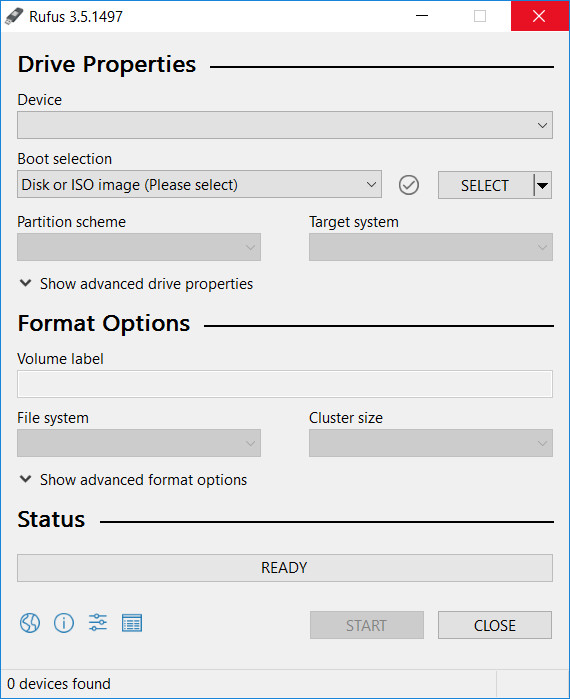

If your computer does not automatically boot from the USB drive, you may need to change your boot order or use a boot menu to select the device you want to boot from. You can now boot into DOS by restarting your computer. Copy these files into the root directory of the USB drive after formatting it.

For example, you may have a BIOS.BIN and FLASHBIOS.BAT file you need to run in DOS. To actually run these files from DOS, you will need to copy them over to your USB drive. You have probably created this boot drive because you have a DOS-based program to run, such as a BIOS update utility or another low-level system program. The process should be extremely quick – it took five seconds on our system. These should be the default options, so you may not even have to configure Rufus at all. This will erase the contents of your USB drive! Back up any important files on the USB drive first. (Rufus includes FreeDOS, so you won’t have to download anything else.)
#Rufus iso windows settings .exe
exe file.Ĭreating a bootable USB drive with DOS is simple: Rufus doesn’t require any installation – you will see the Rufus application as soon as you launch the downloaded. It’s a fast, lightweight application that includes FreeDOS.ĭownload Rufus and launch it. Windows won’t allow you to select the “Create an MS-DOS startup disk” option when formatting a USB drive – it’s grayed out. They may not even have optical disc drives! Use Rufus We once formatted our floppy disks with MS-DOS using the format utility built into Windows, but most computers don’t have floppy disk drives anymore.

They will often require you to boot into DOS and run the utility.
#Rufus iso windows settings how to
How to Create a Bootable DOS USB Drive (original article from: )ĭOS isn’t widely used anymore, but you wouldn’t know if from reading instructions written by manufacturers for BIOS updates, firmware-updating utilities, and other low-level system tools.


 0 kommentar(er)
0 kommentar(er)
